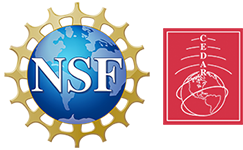2025 Workshop: Science Opportunities with the Upcoming Carruthers Mission
Pratik Joshi
The Carruthers Geocorona Observatory, a NASA Heliophysics Science Mission of Opportunity, is scheduled to launch in September 2025. From its vantage in halo orbit around the Earth-Sun L1 Lagrange point, it will provide the first comprehensive measurements of Earth's global exospheric hydrogen (H) density distribution at both high spatial resolution and high temporal cadence throughout its 2-year primary mission. Knowledge of exospheric H density is crucial for understanding atmospheric escape partitioning among kinetic pathways, including the polar wind, as well as Earth's dynamic response to geomagnetic storms, which is mediated by charge exchange between exospheric hydrogen atoms and trapped ion populations. Exospheric H density specification is also required for magnetospheric ENA image inversion and interpretation of X-ray emission data. In this session, the Carruthers science team will provide a brief overview of the mission concept and data products that will be available to the community and solicit talks that explore science investigations using this unique data set.
Zoom link: https://illinois.zoom.us/j/82347823812?pwd=M7sEXAxPljDGuOth8bZozQYuhxXtAQ.1
Meeting ID: 823 4782 3812
Password: 621769
13:30 – 13:45: Lara Waldrop, "The Carruthers Geocorona Observatory: Mission Overview"
13:45 – 14:00: Alex Zhang, "The Carruthers Geocorona Observatory: Image Calibration and Ancillary Data Products"
14:00 – 14:15: Evan Widloski, "The Carruthers Geocorona Observatory: Reconstruction of the Global, 3D, Hydrogen Density Distribution in the Outer Exosphere"
14:15 – 14:30: Pratik Joshi, "The Carruthers Geocorona Observatory: Retrieval of Global Hydrogen Density at the Exobase and Energetic Partitioning Among Exospheric Populations"
14:30 – 14:45: Edwin Mierkiewicz and Susan Nossal, "Neutral hydrogen in the terrestrial thermosphere and exosphere: Ground-based observations"
14:45 – 15:00: Gonzalo Cucho-Padin, "Global exospheric hydrogen density: A key to interpreting magnetospheric soft x-ray and ENA imagery"
15:00 – 15:15: Robert Kerr, "Outstanding questions concerning the hydrogen abundance variations in the exosphere: Storm-time transport and velocity distributions"
15:15 – 15:30: John Meriwether, "He 1083 nm and H 1282 nm H ultra-wide imaging observations with a SWIR imager"
The Carruthers Geocorona Observatory will provide unprecedented constraints on a key geospace state parameter, exospheric hydrogen density, whose specification is needed for a wide range of scientific investigations (atmospheric evolution, polar wind, ring current decay, plasmaspheric refilling) and for the accurate analysis of data acquired by other sensing systems (ground-based visible airglow sensors, ENA cameras, and X-ray imagers). Historical observations of exospheric density are extremely sparse and physics-based modeling is notoriously challenging, so the Carruthers mission fills a longstanding measurement gap. With its scheduled launch being imminent, a joint CEDAR/GEM session this year is both timely and valuable, by introducing the community to the mission data products that will be available soon and by identifying opportunities to enhance the mission science return through external collaborations.
Lara Waldrop, Pratik Joshi
